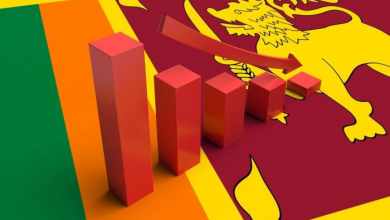REGIONAL MARKETS
Asian markets plunge as Trump threatens to hike China tariffs
Hong Kong, China | AFP | Monday 5/6/2019 – President Donald Trump sent Asian markets plunging Monday after threatening to hike tariffs on US$ 200 billion of Chinese goods at the end of the week in a bid to speed up stuttering trade talks between the economic superpowers.
Shanghai and Hong Kong equities led big losses across the region with the Chinese yuan also taking a battering after the president threw a spanner into the high-level negotiations, which many observers were expecting to wrap up imminently.
“For 10 months, China has been paying Tariffs to the USA of 25% on 50 Billion Dollars of High Tech, and 10% on 200 Billion Dollars of other goods,” Trump tweeted Sunday night. “The 10% will go up to 25% on Friday.”
The warning will throw a shadow over the next round of talks with a delegation from Beijing due in Washington this week with Bloomberg News reporting the Chinese side are considering their position.
The two sides have imposed tariffs on 360 billion dollars in two-way trade since last year. But Trump and his Chinese counterpart Xi Jinping agreed a truce in December, helping fan a surge across world stock markets for the past four months.
“Trump has taken the proverbial sledgehammer to the walnut this morning, and the only two words likely to be on the minds of traders and investors this week are ‘trade talks’,” said OANDA senior market analyst Jeffrey Halley.
In morning trade, Hong Kong tumbled 3.6 percent and Shanghai was off more than five percent as investors there returned for the first time since Tuesday.
Singapore was off three percent and Taipei shed 1.8 percent, while Sydney and Wellington were each one percent down.
Manila and Jakarta were also sharply lower. Tokyo and Seoul were closed for holidays.
“It’s making the outcomes more binary with everybody focussed on the Friday deadline,” said Joyce Chang, chair of global research at JPMorgan Chase & Co.
“There doesn’t seem to be much leeway now to much go past that. It’s going to mean that investors will be very focussed on the trade issues even beyond China,” she told Bloomberg TV.
The yuan also took a hiding, shedding more than 1.3 percent at one point against the dollar, its heaviest fall in more than three years. The currency had been sitting around 10 month highs on the back of optimism the two sides would sign off on a trade pact.
“Investors will remain bearish on the yuan as they reprice in trade war risks because the new developments are a reversal of previous positive progress,” Ken Cheung, senior foreign exchange strategist at Mizuho Bank. “The news was unexpected.”
The flight to safety saw the dollar surge against higher yielding, higher risk units with South Africa’s Rand off one percent, the Mexican peso 0.9 percent lower and the Australian Dollar 0.6 percent lower.
On oil markets, both main contracts were hammered more than two percent by worries that a trade war between the world’s top two economies could hit demand for the commodity.
Adding to weakness in the sector is the US drive to increase output, which comes as it reports rising stockpiles, which are offsetting unrest in Libya, tensions with Iran, and production caps by OPEC and Russia.
However, while trading floors are awash with red, Stephen Innes at SPI Asset Management remained positive.
“We do know the president tends to retreat from more aggressive displays so I am viewing this thinly veiled threat as political posturing or a tactical decision to apply more pressure on China to put through a trade deal that aligns with the best US economic interest at heart.”
“Despite US-China trade talks hitting an apparent impasse based on (the) tweet, I think a deal will be signed shortly.”
Trump’s outburst overshadowed another blockbuster US jobs report Friday that reinforced the view that the economy is in rude health while measured wage inflation eased pressure on the Federal Reserve to hike interest rates.






